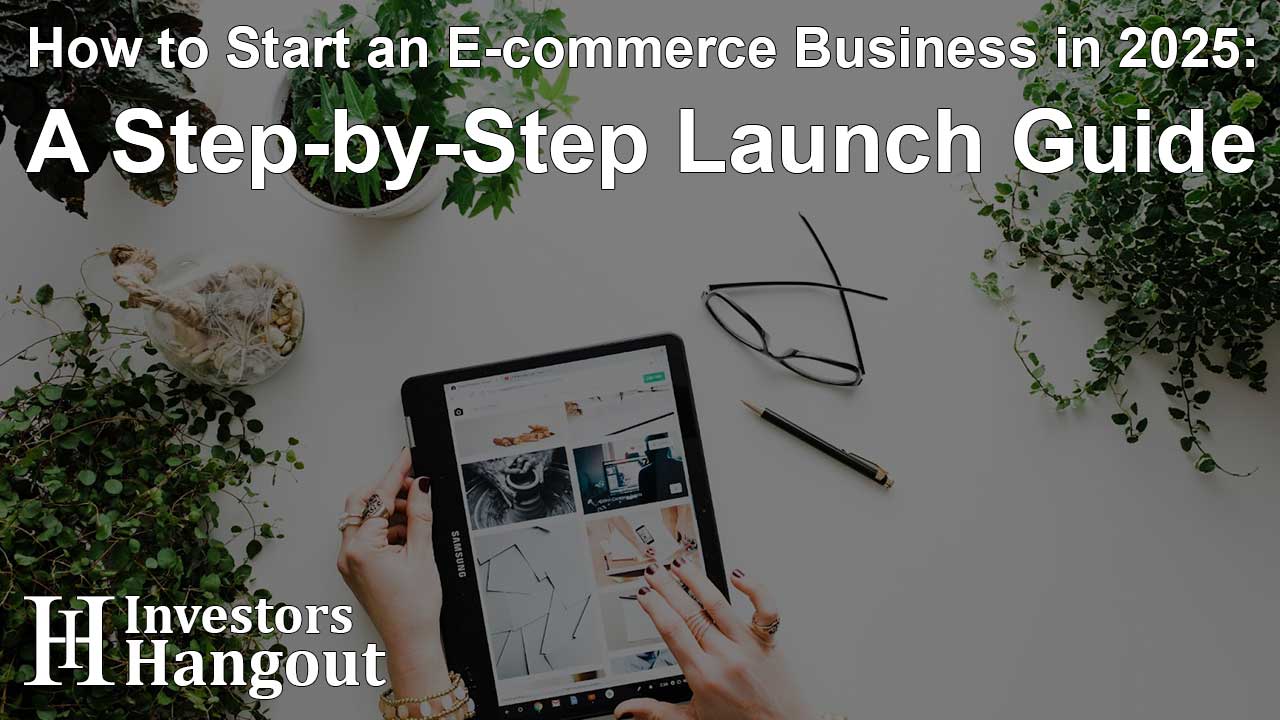How to Start an E-commerce Business in 2025: A Step-by-Step Launch Guide

With more consumers shopping online than ever before, starting an e-commerce business in 2025 is an appealing opportunity for both first-time entrepreneurs and established brands. But while the barrier to entry has lowered, long-term success still depends on planning, execution, and adaptability.
This guide outlines a clear, step-by-step framework for launching your own e-commerce business—from idea validation to post-launch optimization.
Step 1 – Validate Your Product or Niche
A successful e-commerce business starts with selling something people actually want. Begin by identifying real market demand using tools like Google Trends, Amazon Best Sellers, and trend-tracking on platforms like TikTok or Pinterest. Look for gaps where consumer interest is high but competition is still manageable.
Once you’ve identified a product or niche, validate it through lightweight testing:
-
Run targeted ads to a simple landing page
-
Launch a waitlist to measure interest
-
Survey your target audience for feedback
Early validation helps reduce risk and ensures you're solving a problem worth tackling.
Step 2 – Choose the Right Business Model
There’s no single best way to run an e-commerce store—what matters is choosing the model that fits your goals and resources.
Popular models include:
-
Dropshipping – Sell without holding inventory. Low risk, but limited control over fulfillment.
-
Private/White Labeling – Customize products under your own brand. Higher margins, better branding potential.
-
Subscription-Based – Build recurring revenue through monthly boxes or digital access.
-
Digital Products – Sell e-books, templates, or courses with no physical logistics.
Consider your budget, timeline, and scalability when choosing the right model.
Step 3 – Write a Simple Business Plan
Even a lean e-commerce operation benefits from a clear roadmap. A simple business plan should cover:
-
Your mission and brand story
-
Target customer profile
-
Product pricing and sourcing strategy
-
Fulfillment and delivery methods
-
Marketing and sales approach
-
Projected expenses and revenue goals
This plan keeps your efforts focused and can help if you apply for funding later.
Step 4 – Select Your E-commerce Platform
Your e-commerce platform powers everything from product display to checkout. Top options in 2025 include:
-
Shopify – Great for startups with all-in-one features
-
WooCommerce – Ideal for WordPress users wanting control and flexibility
-
BigCommerce – Built for growing brands with larger catalogs
-
Wix or Squarespace – User-friendly for visual brands with smaller product lines
Evaluate platforms based on ease of use, scalability, design flexibility, and integration with tools like payment gateways, email software, and inventory systems. For businesses that want a flexible, white-label payment solution that integrates seamlessly, consider pairing your platform with NMI Payments to deliver secure transactions and a smooth checkout experience.
Step 5 – Build Your Online Store
Once your platform is chosen, it’s time to build. Focus on user experience:
-
Ensure mobile responsiveness
-
Optimize for fast page load speeds
-
Simplify navigation and checkout
Product pages should include:
-
Clear, benefit-focused descriptions
-
High-resolution photos or videos
-
Reviews or testimonials for trust-building
If you’re building your store from scratch or want expert help with conversion optimization, https://kova.team/ provides web design and digital marketing solutions tailored specifically for e-commerce businesses—helping founders launch strong, scalable storefronts.
Step 6 – Launch Your Store with a Go-to-Market Strategy
Don't wait for customers to stumble across your site—bring traffic to it with a focused launch plan.
Start with a few core marketing channels:
-
SEO – Optimize product pages and blogs for long-tail keywords.
-
Email Marketing – Use welcome sequences and abandoned cart flows.
-
Paid Ads – Launch Facebook, Instagram, or TikTok ads to drive early traffic.
-
Influencer Collaborations – Partner with micro-influencers for authentic exposure.
Track early results to refine your messaging, offers, and landing page layout.
Step 7 – Fulfillment, Shipping, and Customer Experience
Fulfillment can make or break customer satisfaction. Based on your model, set up:
-
Dropshipping automation with clear delivery windows
-
In-house packing with printed labels and branded inserts
-
A third-party logistics partner (3PL) for scalable warehousing and shipping
Additionally, provide responsive customer service:
-
Offer chat support or automated help desks
-
Clearly communicate return policies
-
Follow up with post-purchase emails or surveys
A smooth delivery and support experience turns buyers into repeat customers.
Step 8 – Analyze, Optimize, and Scale
Once your store is live, use analytics tools to monitor performance. Key metrics include:
-
Conversion Rate – How many visitors are buying?
-
Customer Acquisition Cost (CAC) – Are your ads profitable?
-
Average Order Value (AOV) – Can you improve through upsells or bundles?
-
Cart Abandonment Rate – Is your checkout process too long or unclear?
Make adjustments regularly and invest more in channels that drive results.
As you scale, consider expanding:
-
Product lines or bundles
-
New ad platforms
-
Loyalty and referral programs
-
International market
Final Thoughts
Starting an e-commerce business in 2025 is more feasible than ever—but building one that lasts takes thoughtful planning and consistent execution. From validating your product to launching your site and marketing it effectively, each step builds on the last.
With the right tools, strategy, and expert partners like Kova Team, entrepreneurs can go from idea to income without getting overwhelmed. Take the first step—and start building your brand today.
About The Author
Contact Evelyn Baker privately here. Or send an email with ATTN: Evelyn Baker as the subject to contact@investorshangout.com.
About Investors Hangout
Investors Hangout is a leading online stock forum for financial discussion and learning, offering a wide range of free tools and resources. It draws in traders of all levels, who exchange market knowledge, investigate trading tactics, and keep an eye on industry developments in real time. Featuring financial articles, stock message boards, quotes, charts, company profiles, and live news updates. Through cooperative learning and a wealth of informational resources, it helps users from novices creating their first portfolios to experts honing their techniques. Join Investors Hangout today: https://investorshangout.com/
